It feels like the sun shines a little brighter each year (hello, climate change!). But whether you’re soaking up the rays or enjoying a breezier day, now’s the perfect moment to experience everything the islands have to offer. From historic cities and dramatic coastlines to indulgent bites and peaceful countryside trails, Rebecca Anastasi brings you her top ten recommendations for making the most of your time in Malta – whenever you visit.
1. Valletta, a Baroque masterpiece
Valletta, Malta’s capital city, is brimming with ecclesiastical art, breathtaking views and historical streets, cementing it as one of the country’s foremost iconic locations. A UNESCO World Heritage Site, the city is usually visitors’ first stop, with its minimalist entrance, inaugurated in 2014 and designed by Renzo Piano, belying its Baroque interior. Valletta is a hive of activity, particularly during the day where lawyers head to court, shopkeepers sell their wares – including some world-renowned brands – and tourists eat lunch in the sun.
If you’re in town, the show at the Malta Experience, set within the St Elmo Bastions, might be a good place to start: in 45 minutes, it takes you on a journey from Malta’s megalithic past to the country’s post-colonial present.
Valletta also boasts some of the island’s must-visit art galleries, such as MUŻA, Malta’s National Museum of Art, as well as Spazju Kreattiv, a modern space set inside the 16th century fortification of St James Cavalier.
In the evening, the once quiet city comes alive with bars, countless restaurants and entertainment. Don’t miss a chance to tour Teatru Manoel, Malta’s national theatre and one of Europe’s oldest stages, or to watch a show at the open-air Pjazza Teatru Rjal, built upon the ruins of the capital’s former opera house.
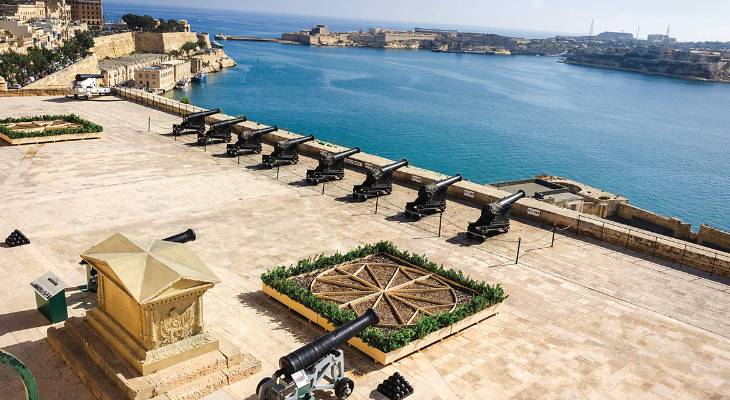
Inigo Talylor
2. ‘The Silent City’
Heading from Valletta, Mdina lies approximately 12km inland on a plateau perched high above the green valleys which lead down to the island’s heart, to the towns and villages of Balzan, Attard and Mosta. Known by locals as the ‘Silent City’, Mdina is less of a city or a town – its stunning palazzos, while highly sought-after, are unaffordable for most – and more of a time capsule, with its narrow, winding alleyways and its wide pjazza, evoking a time of carriages, balls and corsets. The view of the island from its ramparts is spectacular, particularly on a clear day – and Malta has plenty of those. And, if you need to stop for some refreshments, the legendary Fontanella Tea Garden offers Malta’s best-loved and iconic chocolate cake.
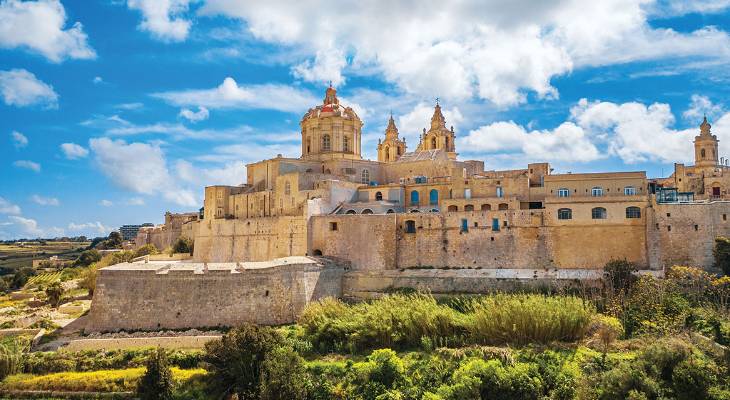
Karina Movsesyan - iStockphoto.com
3. Nature walks and rural trails
Milder days are the perfect time of year to enjoy Malta’s green pastures and rocky garigue (a type of low Mediterranean scrubland), offering a slower pace away from the hustle and bustle of the more frenetic towns. There are some spots popular with locals, such as the walk from the outskirts of Mtarfa down the hill to Chadwick Lakes.
Alternatively, if you have a leisurely afternoon to dedicate to the endeavour, take the full trail through the Liemu Valley and Qlejgħa Valley, starting from the Fiddien Box near Rabat, with information panels along the route detailing the wealth of flora and fauna in the area.
Gozo is also well-known for its hilly pastures, with routes through the salt pans, Xlendi and Ramla Bay, where you can even visit Calypso’s Cave. Here, legend has it, the nymph Calypso imprisoned Odysseus on his way back home to Ithaca. For more information on the walking trails the islands have to offer, visit: www.visitmalta.com/en/hikes-and-walks-malta-gozo
4. Sacral locales
A commonly-held belief is that there is a grand total of 365 churches on the Maltese islands – one for every day of the week. While this assertion remains apocryphal – I, myself, have not actually counted the number of chapels and churches – there is no doubt that the island is teeming with places of worship, some opulent, and some simple affairs stripped down to focus on the workings of the soul.
Chief among the former is St John’s Co-Cathedral in Valletta, the home of Caravaggio’s only signed painting, The Beheading of St John the Baptist. Dominating the Co-Cathedral’s Oratory, the work’s chiaroscuro foregrounds the dramatic violence of the saint’s last moments – a cinematic composition from the 17th century, before the birth of cinema.
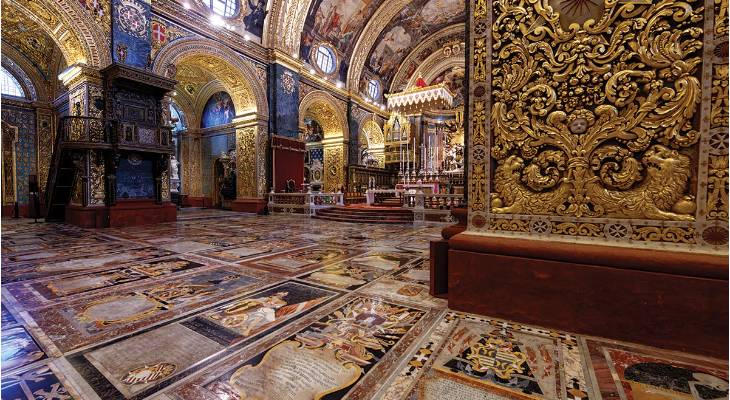
Kurt Arrigo
In Mdina, the Metropolitan Chapter, which includes the cathedral as well as its museum and archives, reveals the strong theological presence and influence of the Catholic Church in Malta over the centuries, one which, for a long time, dictated much of civil life on the island.
5. Urban strolls
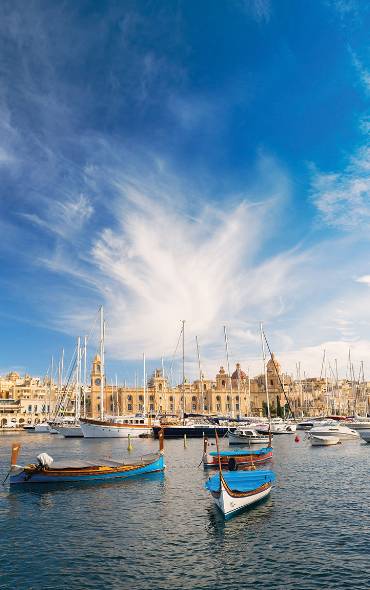
Sergey Ryzhkov - iStockphoto.com
Walking along the islands’ promenades has been a national pastime for centuries. In times gone by, it satisfied the Maltese people’s desire to watch and gossip about others, as well as to be seen and admired as they took a stroll along the seaside. It was, in effect, a marker of entry into society. Today, it remains popular, although the focus has changed, with joggers, families and teenagers heading to the shore for some fresh air and healthy exercise.
Sliema’s promenade has always been one of the most popular spots. Moreover, in the north of the island, the Qawra seafront offers stunning views of St Paul’s islands; whilst there, you can also stop at the National Aquarium to discover more about Malta’s marine wildlife, or at Café Del Mar for a quick dip, a cocktail or a leisurely lunch before continuing on your way.
In the south, the waterfronts of Birgu, Senglea and Kalkara boast historical façades which frame the Grand Harbour, with eateries lining the waterways – some of the country’s best spots to see the sunset and delay a return to reality.
6. Gozitan gems
While Malta’s sister island is a mere 20-minute ferry ride away, making the journey feels like leaving the world behind and slipping into a more languid pace. Ramla Bay is a stunner, but if you prefer to steer clear of the crowds, head to San Blas Bay. Although it’s a little tricky to access due to its steep hill, its crystal-clear waters and red sands are a worthy reward for the climb back up. Wander the sleepy streets of Għarb, take in the views from Nadur, and meander through the countryside at San Lawrenz – for this is a place that leaves you both energised and calmed by the sun.

javarman3 - iStockphoto.com
7. Feast your taste buds
If the first thing you do when you wake up in the morning is wonder what the day’s gastronomic delights will hold, you’re in luck because the Maltese islands are chock-full of delicious opportunities.
Some are less well-known than others, for example, the Mġarr Farmers Bar in the rural area of Żebbiegħ is not, strictly speaking, on the tourist trail, but hosts farmers and other locals looking for a bite to eat, or a drink with friends. Popular favourites include their imqarrun – Maltese baked pasta – as well as their braġjoli, rolled parcels of beef, stuffed with more meat and often, eggs and ham.
In Gozo, a well-known stop is Maxokk, a bakery in Nadur which offers Gozitan ftira, a pizza-like dough topped with Mediterranean ingredients sourced locally, such as potatoes, capers and tuna. If you’re after something a little more curated, however, and are keen to explore the island’s wine offering, the Meridiana Wine Estate offers tastings and tours. Famous for their standout white wine, Isis (Chardonnay), and their award-winning red, Nexus (Merlot), among others, their sessions – organised on a terrace overlooking their bucolic vineyard – offer the opportunity to savour some of Malta’s finest.
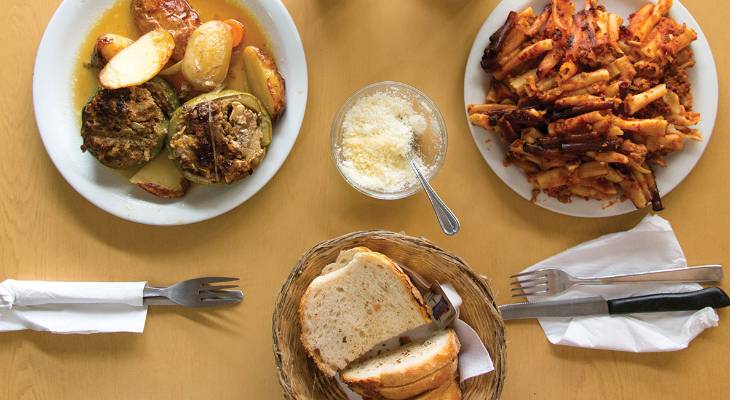
8. Indulge yourself
Malta is not only beaches, countryside and picturesque medieval or Baroque cities and towns. The islands also offer the opportunity to indulge in the 21st-century luxuries of shopping, cocktails, dinner, and, perhaps, a massage or two.
Sliema, a cosmopolitan town in the centre of the island, and the capital Valletta are obvious choices, but there are also smaller boutiques, outlets, parlours, and spas in the more residential areas of Naxxar, Attard or Mosta, for instance.
Naxxar boasts clothes stores, beauty salons and wellness centres, such as Sanya or Yue, which help ease the mind and the body, while Mosta and Attard offer a growing number of independent retailers and beauty spaces that blend everyday convenience with a touch of indulgence. Whether you’re looking for a quiet afternoon of pampering or some spontaneous retail therapy, these less touristy towns reveal another side of island life – relaxed, refined and effortlessly modern.
9. Garden enclaves
Across the centuries, Malta’s various rulers, aware of the islands’ arid weather and rugged countryside, created spaces of pause within the centres and in the outskirts of its towns and cities – gardens where their inhabitants could interact and find reprieve from the sun’s harsh rays.
Floriana, located on the edge of Valletta, is testament to such an effort: the Argotti Botanic Gardens is the home of myriad species of flora, both those indigenous to the Mediterranean, as well as some imported specimens, with a guided tour offered to those who want to discover their history and evolution.
A few kilometres away, in Attard, the President’s Palace Gardens, known as San Anton, is another thoughtfully composed green space; walk along its walkways and lanes, enjoying the shade of the trees – and keep an eye out for the resident peacocks!
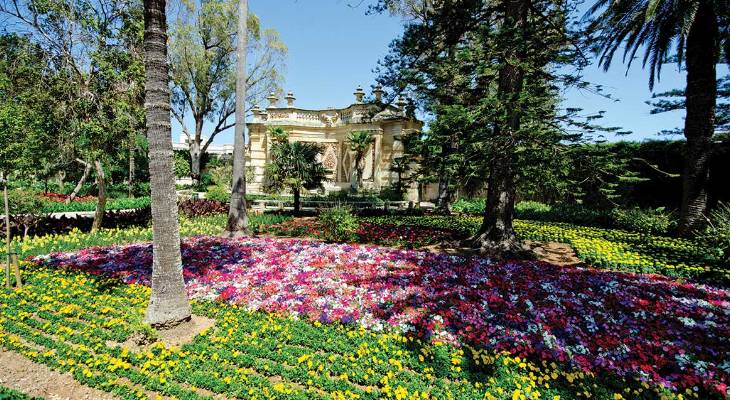
viewingmalta.com
10. The ruins of history
Every corner of the Maltese islands has a story to tell. One notable example is the Mosta Rotunda, the central town’s parish church. During World War Two, it became the site of what many consider a miracle: on 9th April 1942, as a congregation prayed during mass, a German bomb fell through the dome and failed to detonate, sparing all those inside. Today, the church stands as a powerful testament to those days of courage and fear. Part of the visit includes a tour of a World War Two shelter beneath the church, now reopened as an exhibition space.
Similarly, in Rabat, the St Paul’s Catacombs were also used as bomb shelters, and you can take a tour to discover remnants of the time when people huddled underground, uncertain of what they would find when they resurfaced. Further along the coast, the UNESCO World Heritage Ħaġar Qim and Mnajdra Archaeological Park testifies to the everyday lives of those who came long before. On 21st June, during the summer solstice, the sun’s rays align with the temples’ inner altar to mark the turning of the season.
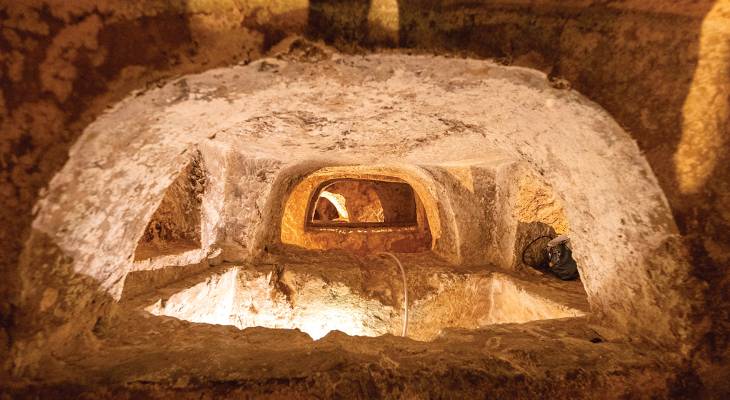
Steven Psalia - Heritage Malta
This article first appeared on Guide Me 2025.